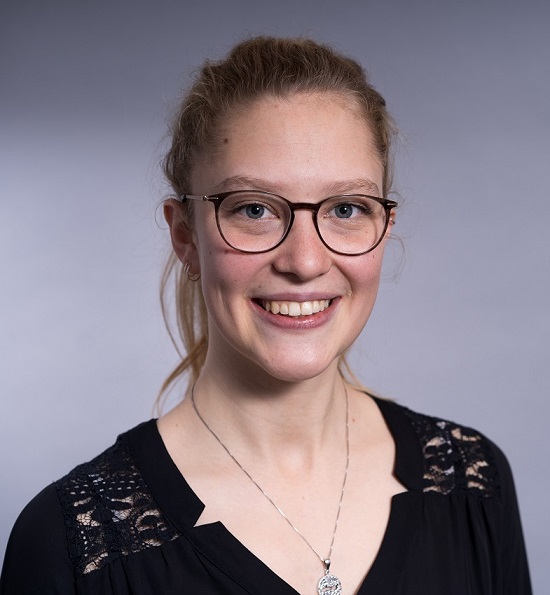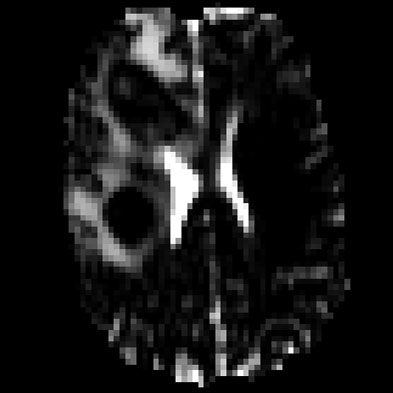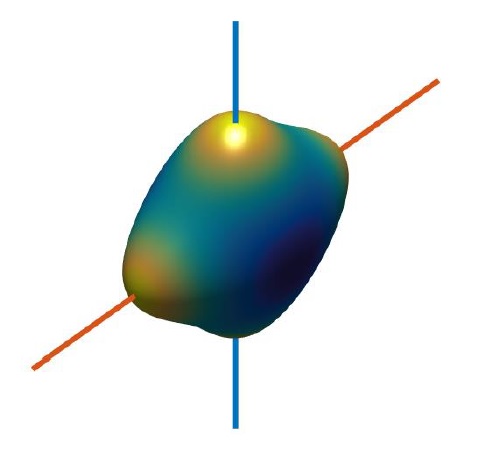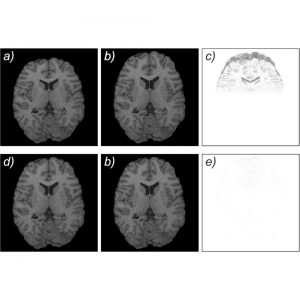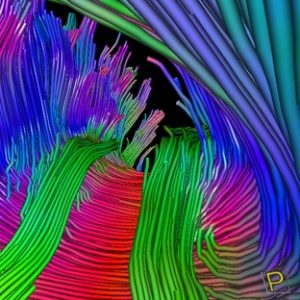
Diffusion Imaging for the Reconstruction of Neural Pathways
Motivation
Diffusion imaging (based on magnetic resonance imaging) can be used to obtain information about the course of neuronal pathways. Neuronal pathways are important structures in the brain that are associated with integrative functions, such as motor or sensory. In neurosurgery, diffusion imaging is of great value, because in case of pathological changes (tumor) during brain surgery, the neural pathways must not be injured in order to avoid neurological deficits.
Scientific Questions
Describing the local diffusion properties with a suitable model is central to the analysis of diffusion image data.
With scalar diffusion metrics calculated from the models, irregularities can be found and comparisons between diseased and healthy patients can be made.
More complex derived orientation functions can be used as a basis for tractography.
Other more specific questions address, among other things:
- Harmonization: dMRI images from different scanners can vary strongly. This variation of images between different scanners is often greater than any image difference between healthy and diseased patients. Thus, an important challenge is the harmonization of different scanners to allow the comparison of different data.
- Deep learning approaches for the calculation of diffusion properties: Advanced algorithms for accurate analysis of dMRI data are often not applicable to clinical data that must be acquired in limited time. Deep learning approaches should make it possible to obtain more accurate results even on clinical data.
- Tractography: Tractography can be used to non-invasively describe fibre tracts in the white matter of the brain. This makes it possible to understand where and how tracts run in the white matter and which parts of the brain they connect. However, reconstructing neuronal structures from dMRI data is non-trivial due to the complexity of the diffusion information available. New deep learning approaches should be able to compute more accurate tractography results.
Theses
New theses are regularly advertised in the area of Diffusion Imaging. In addition to the general overview, there are also numerous topics that have not yet been advertised, which will be gladly presented in a personal conversation.
Partners
- Prof. Dr. Danielle Bassett, Department of Physics and Astronomy, University of Pennsylvania
- Prof. Dr. J. Christopher Edgar, Department of Radiology, Children’s Hospital of Philadelphia, University of Pennsylvania
- Prof. Dr. Ute Habel, Department for Psychiatry, Psychotherapy und Psychosomatics, University Hospital RWTH Aachen
- Dr. Chuh-Hyoun Na, Department for Neurosurgery, University Hospital RWTH Aachen
- Dr. Kerstin Jütten, Chair of Medical Psychology and Medical Sociology, University Hospital RWTH Aachen
- Prof. Dr. med. Christopher Nimsky, Director of the Department for Neuosurgery, University Hospital Giessen and Marburg
- Jun. Prof. Dr. Thomas Schultz, Head of the Visualization and Medical Image Analysis Group, University of Bonn
- Prof. Dr. med. Wolfgang Grodd, (Emeritus) Department for Psychiatry, Psychotherapy und Psychosomatics, University Hospital RWTH Aachen
- Dr. med. Georg Neuloh, Department für Neurosurgery, University Hospital RWTH Aachen
- Dr. rer. nat. Katrin Sakreida, Department for Psychiatry, Psychotherapy und Psychosomatics, University Hospital RWTH Aachen
External Funding
- DFG Research Grant, “Novel Deep Learning Approaches for Analyzing Diffusion Imaging Data”, Project nr. 417063796
- DFG IGRK 2150, “The Neuroscience of Modulating Aggression and Impulsivity in Psychopathology”, Project nr. 269953372
Contact
Publications
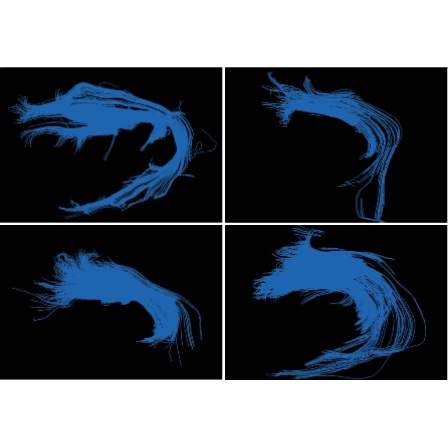
Fiber Tractography Based on Diffusion Tensor Imaging Compared with High-Angular-Resolution Diffusion Imaging with Compressed Sensing: Initial Experience
In: Neurosurgery 72 (Suppl 1)
Address
Lehrstuhl für Bildgebung und BildverarbeitungRWTH Aachen University
Kopernikusstraße 16
52074 Aachen Germany
lfb@lfb.rwth-aachen.de
+49 241 80 27860
+49 241 80 22200
By continuing to use the site, you agree to the use of cookies. more information
English translation below.
Die Cookie-Einstellungen auf dieser Website sind so eingestellt, dass sie "Cookies zulassen" sollten, um das bestmögliche Surferlebnis zu erhalten. Sie können diese Website weiterhin nutzen, ohne Ihre Cookie-Einstellungen zu ändern, oder Sie klicken unten auf "Accept" und stimmen der Nutzung der Cookies zu.
In den Cookies werden lediglich die von Ihnen gewählten Spracheinstellungen gespeichert. Bitte lesen Sie auch unsere Datenschutzerklärung.
The cookie settings on this website are set to "allow cookies" to give you the best browsing experience possible. If you continue to use this website without changing your cookie settings or you click "Accept" below then you are consenting to this.
Only your chosen language settings are stored in the cookies. Please also read our privacy policy.



